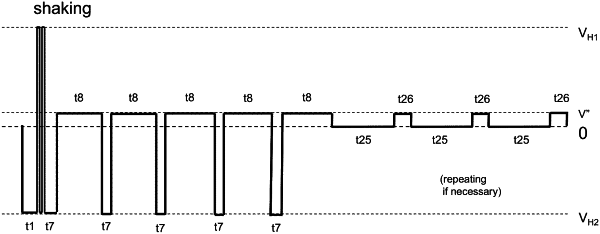| CPC G09G 3/344 (2013.01) [G09G 2310/065 (2013.01); G09G 2310/068 (2013.01); G09G 2320/0242 (2013.01)] | 19 Claims |

|
1. A driving method for driving a pixel of an electrophoretic display comprising a first surface on a viewing side, a second surface on a non-viewing side, and an electrophoretic fluid disposed between a first light-transmissive electrode and a second electrode, the electrophoretic fluid comprising a first type of particles, a second type of particles, a third type of particles, and a fourth type of particles, all of which are dispersed in a solvent, wherein
(a) the four types of pigment particles have different optical characteristics;
(b) the first type of particles and the third type of particles are positively charged, wherein the first type of particles have a greater magnitude of positive charge than the third particles; and
(c) the second type of particles and the fourth type of particles are negatively charged, wherein the second type of particles have a greater magnitude of negative charge than the fourth particles,
the method comprises the steps of:
(i) applying a first driving voltage to the pixel of the electrophoretic display for a first period of time (t7, t9) at a first amplitude to drive the pixel to a color state of the first or the second type of particles at the viewing side;
(ii) applying a second driving voltage to the pixel of the electrophoretic display for a second period of time (t8, t10), wherein the second driving voltage has a polarity opposite to that of the first driving voltage and a second amplitude smaller than that of the first amplitude, to drive the pixel from the color state of the first type of particles towards the color state of the fourth type of particles, or from the color state of the second type of particle towards the color state of the third type of particles, at the viewing side, and repeating steps (i)-(ii);
(iii) applying no driving voltage to the pixel for a third period of time (t25, t27);
(iv) applying the second driving voltage to the pixel of the electrophoretic display for a fourth period of time (t26, t28), to drive the pixel from the color state of the first type of particles towards the color state of the fourth type of particles, or from the color state of the second type of particle towards the color state of the third type of particles, at the viewing side, and repeating steps (iii)-(iv), wherein no driving voltage having the same polarity as the first driving voltage is applied between steps (iii) and (iv).
|